How to Leverage Uniswap – Ethereum’s Noncustodial Defi Trading Platform
Publikováno: 6.9.2020
 In 2020 decentralized exchanges (dex) have grown quite mature compared to just a few years ago. One specific dex gathering a lot of steam this year in the defi world is Uniswap, a trading platform that held $1.3 billion locked in value and dominated most defi applications by over 18% Friday evening. The following review […]
In 2020 decentralized exchanges (dex) have grown quite mature compared to just a few years ago. One specific dex gathering a lot of steam this year in the defi world is Uniswap, a trading platform that held $1.3 billion locked in value and dominated most defi applications by over 18% Friday evening. The following review […]
The post How to Leverage Uniswap – Ethereum’s Noncustodial Defi Trading Platform appeared first on Bitcoin News.

In 2020 decentralized exchanges (dex) have grown quite mature compared to just a few years ago. One specific dex gathering a lot of steam this year in the defi world is Uniswap, a trading platform that held $1.3 billion locked in value and dominated most defi applications by over 18% Friday evening. The following review is a detailed explainer of what Uniswap is and how to leverage the dex using an Ethereum wallet like Metamask.
**Price quotes, TVL, and defi dominance percentages from this Uniswap review were recorded on Friday evening, September 4, 2020.
Ethereum Dex Uniswap Shatters Records
Decentralized finance (defi) has been all the rage and one feature the economy has amplified is the use of decentralized exchanges. News.Bitcoin.com recently reported on the massive dex trade volumes that have been taking place recently, and this week has been no different.
On Friday evening, stats from Dune Analytics indicate that dex platforms have continued to surge in volume with seven-day growth at 178%. During the last week, dex platforms have surpassed $7.1 billion in global swaps and $968 million in the last 24 hours.
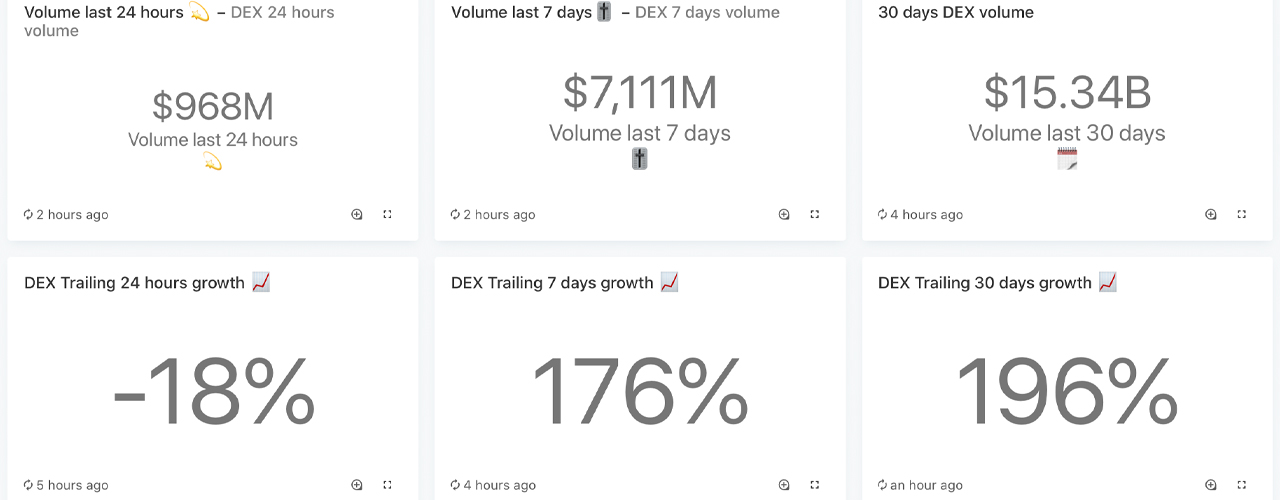
The dex protocol Uniswap is the most dominant trading platform. Uniswap eclipses most of the dex contenders with 71.9% of the aggregate dex trade volume globally. Over 91,000 traders were active on Uniswap on Friday evening. Defipulse.com stats show Uniswap also dominated by more than 18% of the defi economy with $1.3 billion total-value locked (TVL) at its height. In recent days, Uniswap’s trading volume outpaced the centralized exchange Coinbase Pro as well.
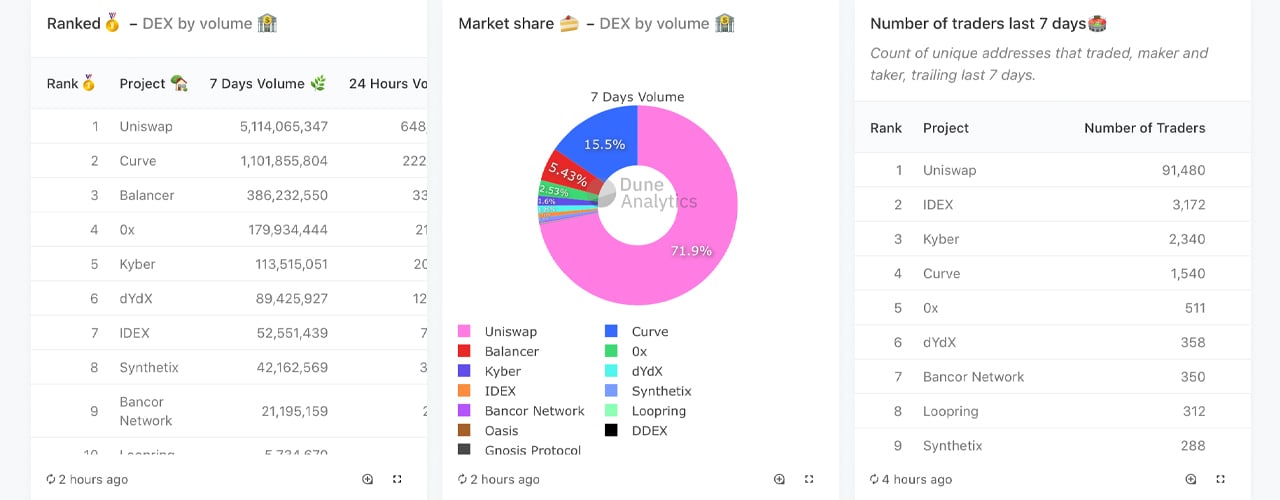
Uniswap’s creator Hayden Adams developed the dex after being inspired by an Ethereum Research post written by Vitalik Buterin. Essentially Uniswap is an Ethereum exchange built by leveraging smart contracts and liquidity pools, in contrast to a traditional centralized exchange’s order book. In the past, older crypto dex platforms had liquidity issues, but Uniswap’s liquidity pool model changed the game. The web portal Ethhub.io also offers a comprehensive “Graphical Guide for Understanding Uniswap,” which shows a visual representation of how the app works.
With a decent Ethereum wallet, users can simply connect to Uniswap’s application and trustlessly swap ERC20 tokens in an effortless manner. The application allows users to not only swap the coins, but they can also create any type of ERC20 pool or provide an existing pool with liquidity and earn funds. Uniswap allows anyone from anywhere to swap coins in a permissionless fashion without needing an ID or going through a cumbersome KYC process.
How to Use Uniswap With Metamask
Accessing Uniswap is easy and relatively simple to understand. If one already knows the very basics of leveraging ethereum (ETH) and wallets like Metamask, then Uniswap is fairly intuitive. Essentially the first thing to do is make sure you have an Ethereum wallet and one that can interact with ETH smart contracts. Metamask works well for most defi applications with its Chrome browser extension, but it also launched a new mobile wallet this week.
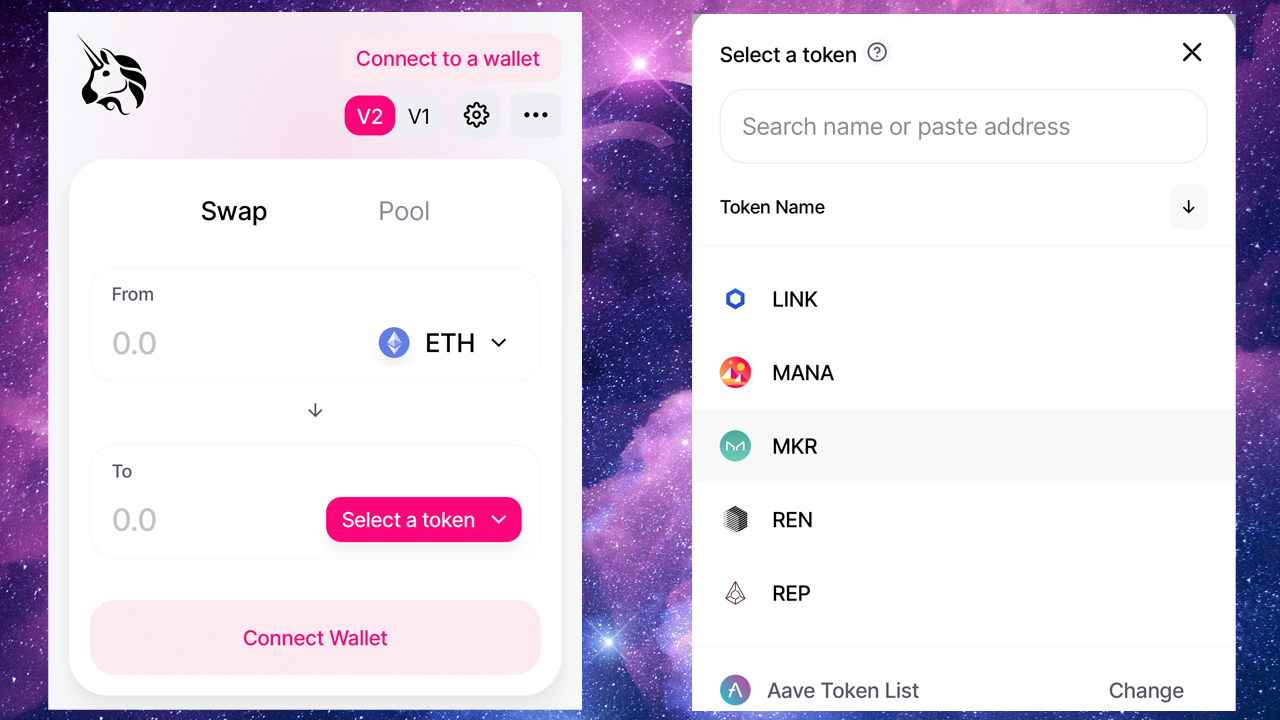
Uniswap’s two features allow people to either add liquidity to a pool or trade ERC20s for ETH or other ERC20 tokens. So if you want to use the dex, it’s also a good idea to have some ETH-based tokens or just ether deposited into your Metamask wallet.
From here simply head over to Uniswap and connect your wallet to the Version 2 (V2) application. Metamask will ask you to accept the permissions in order to tether the wallet to the Uniswap application. Simply confirm with Metamask and you can now see your balance of ETH or tokens in the app’s user interface window. Throughout every action, Metamask makes sure the owner of the funds authorizes all the Uniswap transactions.
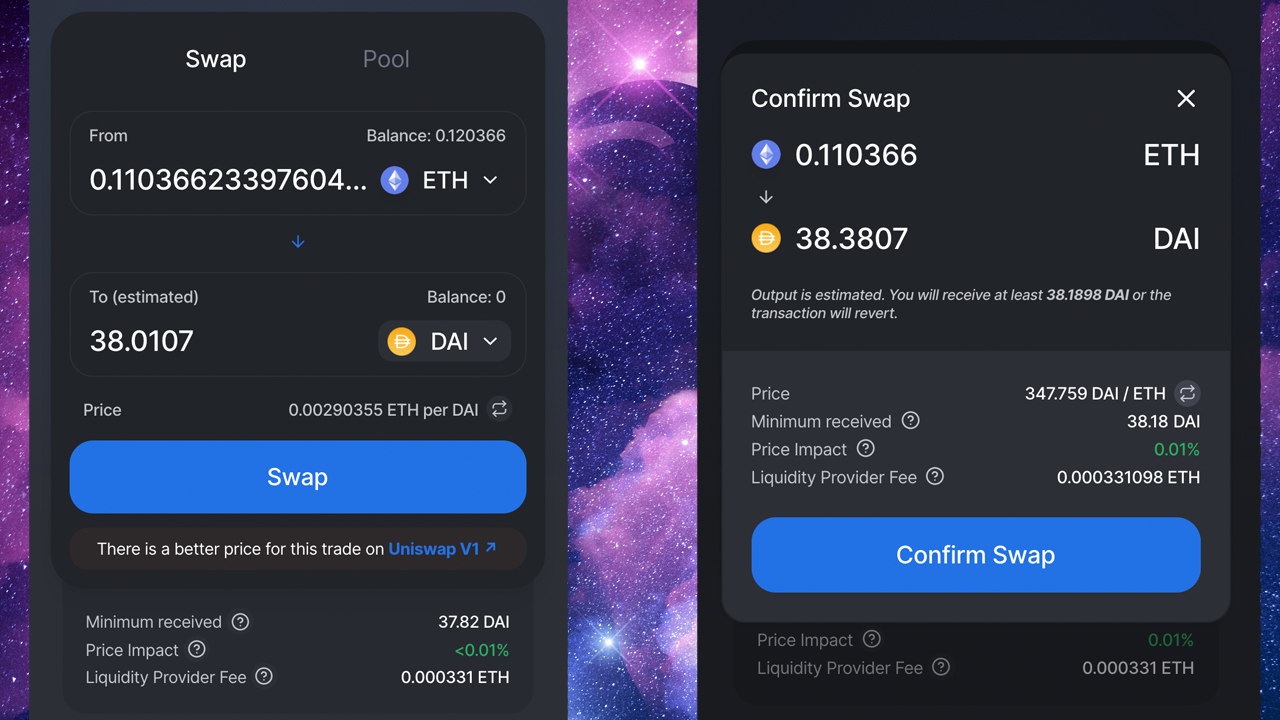
If you choose the “Swap” feature, the application asks you to choose from a list of tokens tethered to applications like Aave or Compound in the V2 software.
“Uniswap now supports token lists,” the software will tell you. “You can add your own custom list via IPFS, HTTPS, and ENS.” From here you can “choose a list” like the “Aave Token List” or others like “CMC Defi.” After choosing a list, you can then choose the type of token you want to trade and the token you want to leverage to buy it.
If you have ETH in your Metamask wallet simply choose the crypto asset in the “from” section and Uniswap will show the balance. Then you can choose which type of token you want to obtain, as the list of tokens is quite extensive. Uniswap supports any ETH-based token and perusing through the list you will notice popular assets like DAI, WBTC, BAT, USDT, USDC, LEND, MANA, MKR, TUSD, and many more. In the “to” selection, select the token you want and Uniswap will explain the exchange rate.
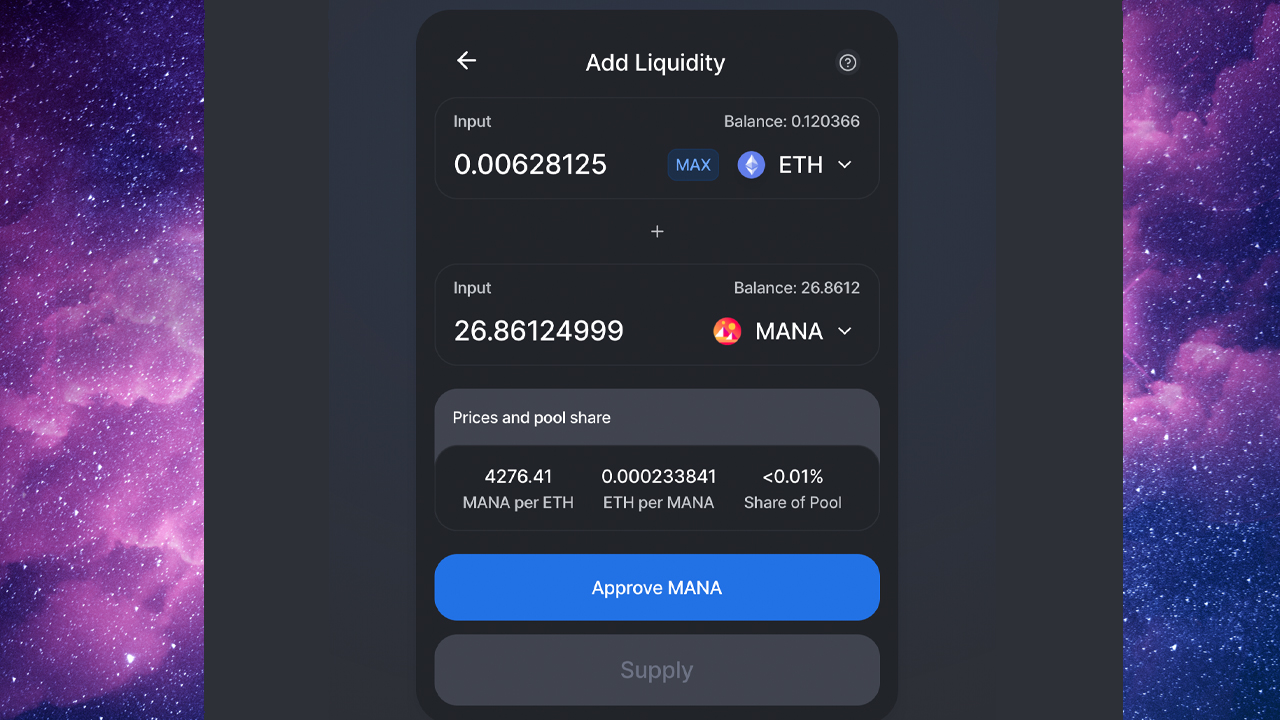
For instance, I had a balance of 0.120333 ETH and selected the stablecoin DAI for my trade. I press “max” (using my entire Metamask balance of ETH) and Uniswap will tell me the price of the trade. Selecting DAI for my 0.120333 ETH ($42 on 9/5/20) will get me 38.3549 DAI and that doesn’t include the network fee to swap.

At the time of writing ETH fees are between 450 to 550 gwei or $3.36 to $4.11 per transaction. Metamask will explain to you how much the gas fee will be when executing the Uniswap trade. Following the network confirmations, the coins purchased will be deposited into your Metamask wallet.
With the other feature called “Pool” you can add liquidity to certain pools in the Uniswap ecosystem and earn a percentage of trading fees for supplying funds to the pool. Simply press “add liquidity,” choose a token input and Uniswap will explain the prices pool shares.
For instance, if I add an ETH input and 26.86 MANA, Uniswap details the price of ETH per MANA and the pool share which is 0.01%. Of course, those who add massive amounts of liquidity get a much larger pool share of trading fees than those who only add small fractions of funds.
Just like most of the defi applications out there today, the very basics of Uniswap’s features are pretty easy to use. However, gas fees at $3-4 per transaction make the experience less pleasant and ETH fees were even higher just a few days ago.
Besides the obvious ETH fee issue, Uniswap allows for quick trades in a noncustodial fashion and removes the horrid KYC processes depressing the crypto industry today. This privacy is the most refreshing benefit of the experience. For some more perspective, the video below created by the Youtuber, “Every Bit Helps,” also gives individuals a visual step-by-step on how to leverage the Uniswap protocol.
**Price quotes from this Uniswap review were recorded on Friday, September 4, 2020.
What do you think about Uniswap? Have you ever tried the dex application? Let us know in the comments section below.
The post How to Leverage Uniswap – Ethereum’s Noncustodial Defi Trading Platform appeared first on Bitcoin News.